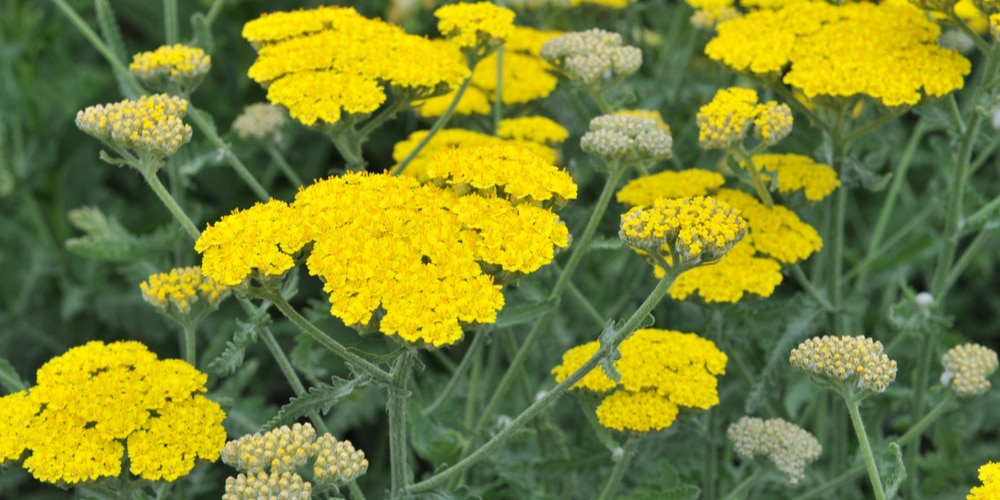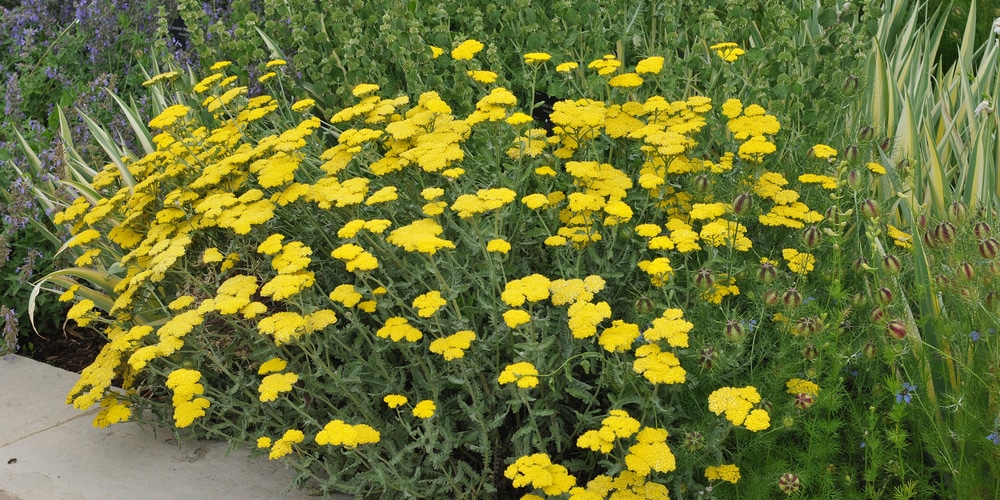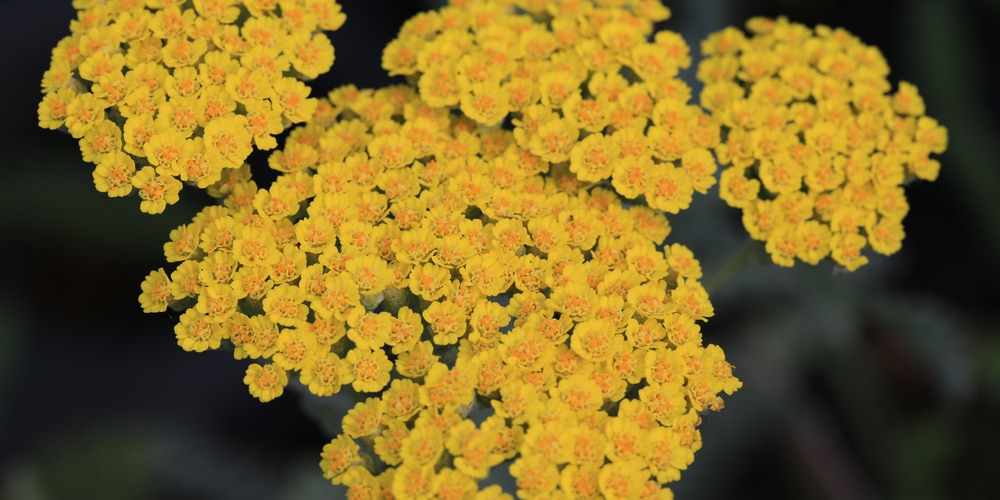Highly prized for its long-blooming, drought-tolerant flowers, Achillea Moonshine is a perennial that will delight you season after season. Growing to be about 2 feet tall and 3 feet wide, this little plant is perfect for filling in gaps in your garden beds or providing color in containers.
Popularized for its easy care and low maintenance requirements, Achillea Moonshine, or Moonshine yarrow, is an excellent plant for beginner gardeners or those with limited time to spend in the garden. Keep reading to learn everything you need to know about caring for these plants!

| Botanical Name | Achillea Moonshine |
| Common Name | Moonshine Yarrow |
| Plant Type | Perennial |
| Flower Color | Flat-topped yellow flowers |
| Size When Mature | 18 inches tall, 24 inches wide |
| Bloom Time | Early to late summer |
| Sun Requirements | Full sun, tolerates partial shade |
| USDA Hardiness Zones | 3 – 8 |
| Soil PH Range | 4.5 – 8.5 |
| Soil Type | Acidic, well-draining, loamy soil |
| Water Needs | Low to Medium |
| Native Area | Europe and Western Asia |
What You Need to Know About Achillea Moonshine
The stunning Achillea Moonshine is a perennial flowering plant found in gardens throughout North America. It has silver-white leaves and produces masses of small, yellow flowers from early summer to late autumn.
With its highly distinctive umbel-shaped flowers, Achillea Moonshine is an excellent choice for adding interest and color to your garden, thanks to its upright growth habit and long flowering season.
Additionally, this vibrant plant has aromatic foliage and fragrant flowers that make it a popular choice in dried flower arrangements. It is also a favorite of bees and butterflies, so planting Achillea Moonshine in your garden will help to attract these important pollinators.
Many gardeners refer to it as a well-behaved Achillea variety since it is not invasive and does not self-seed. With that being said, this plant is a good option for those new to gardening or don’t have a lot of time to spend on maintenance.
How to Care for Achillea Moonshine
Here’s everything you need to know about growing and caring for a thriving Achillea Moonshine plant:
Light
This clump of cheerful yellow flowers will do best in full sun. Meaning, that it needs at least six hours of direct sunlight each day. That being said, it will also tolerate partial shade, especially in hot summer climates.
Water and Soil Needs
While some other varieties have medium water needs, Achillea Moonshine is quite a drought-tolerant plant once it is established. This means that you can let the soil dry out in between watering. In fact, watering while the soil is still moist can lead to root rot.
When it comes to soil, this plant is not picky, but it does grow best in loamy soil with a soil pH range between 4.5 and 8.5. Ensure that there’s proper drainage, as keeping the soil may cause your Moonshine yarrow to get leggy or floppy.
Temperature Requirements
Not only is this plant beautiful and vibrant, but it is also quite tolerant, being able to withstand both high and low temperatures. It is winter hardy in USDA hardiness zones 3-8.
Fertilizer
In general, the best fertilizer for Achillea Moonshine is a slow-release, balanced fertilizer with an N-P-K ratio of 10-10-10. However, use only when needed. Most of the time, the plant doesn’t do well in fertile, rich soil, which will encourage the growth of foliage rather than flowers.
If you want your garden or landscape to be filled with the cheerful flora of Achillea Moonshine, remember that overfertilizing can do more harm than good. Like watering, too much of a good thing can lead to problems like root rot or weak stems.
Common Diseases
One of the great things about Achillea Moonshine is that it is relatively resistant to both pests and diseases. However, there are a few problems that you should be on the lookout for, such as powdery mildew, root rot, and aster yellows.
Powdery mildew is a white or gray powdery fungus that can appear on the leaves and stems of Achillea Moonshine plants. This disease is most common in hot, humid weather and can be controlled with a fungicide.
Root rot is another problem that can affect this plant, especially if it is grown in poorly-drained soil. This disease can be deadly, so it is important to take measures to prevent it, such as using a well-draining potting mix and avoiding overwatering.
Aster yellow is a viral disease that is spread by aphids. This causes the leaves of Achillea Moonshine to turn yellow. Unfortunately, there is no cure for this disease, so the best course of action is to remove and destroy the affected plants.
Achillea Moonshine Propagation
Achilles was a great warrior brought down by a small, innocuous arrow to his heel. In much the same way, the Achillea Moonshine is a great plant that can be brought down by a small, innocuous mistake in propagation.
This hardy perennial is easy to grow from seed, but it can be tricky to propagate from cuttings. The best time to take cuttings is in early summer when the plant is just beginning to bloom.
However, if you take the cuttings too early or too late in the season, they will not take root.
In addition, the cutting must be taken from new growth, not old growth. This ensures that the cutting has enough energy to put into growing roots rather than flowers.
Once you have taken the cutting, remove the lower leaves and dip them in rooting hormone. Then, plant the cutting in a well-draining potting mix and water it regularly.

